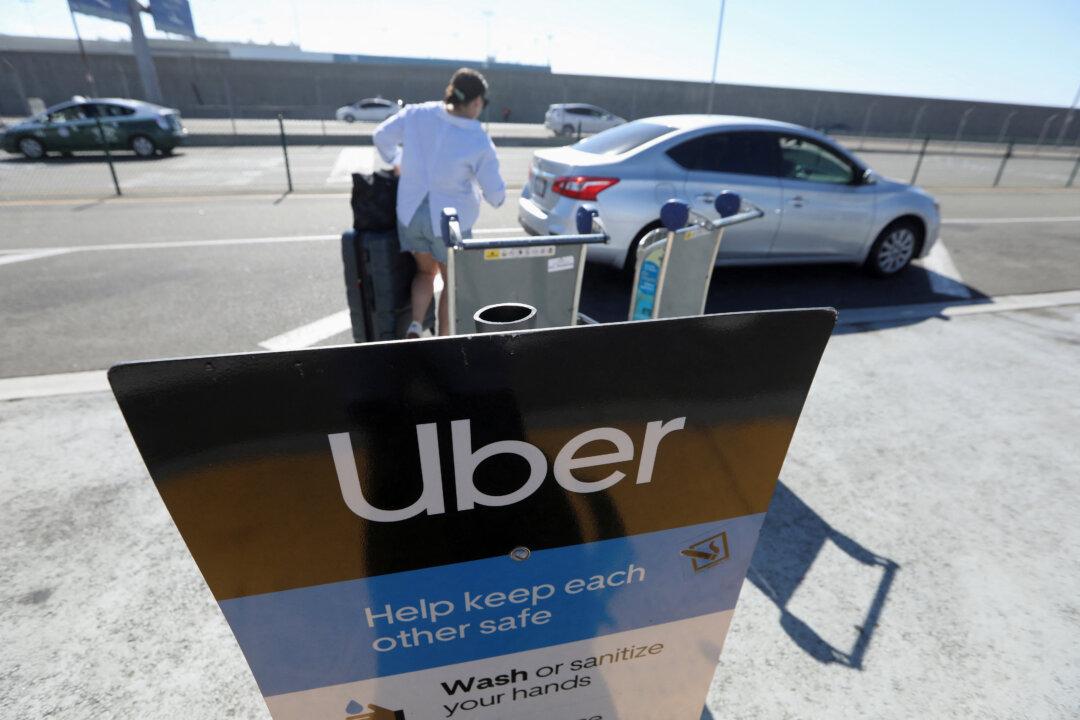Uber Technologies reported first-quarter earnings that beat analyst expectations, but its stock price fell due to lower-than-expected revenue and bookings, as well as concerns about its valuation.
Revenue grew at an annual rate of 14 percent, to $11.3 billion, thanks to an 18 percent rise in trips and a 14 percent rise in gross bookings.
But both revenue and gross bookings slightly missed market expectations, sending the company’s shares 2.56 percent lower during May 7 trading on Wall Street.
Uber’s high market valuation added to the downward pressure on its shares. At its current price of $84, the stock has a forward price-to-earnings ratio of 32, well above the S&P 500 average.
Management attributed the rise in profitability to the focus on the core business and commitment to excellence.
Chief Financial Officer Prashanth Mahendra Rajah reiterated the company’s focus on improving profit margins, emphasizing its commitment to financial discipline and generating free cash flow, what he called “the milk of Wall Street.”
“We delivered over $2 billion of quarterly free cash flow, with multiple levers in our control to generate industry-leading cash flow growth,” he said. “We remain focused on disciplined capital allocation to drive greater financial durability and are on track to deliver against our multiyear plan.”
Georgios Koimisis, associate professor of finance at Manhattan University, said Uber’s financial performance in the first quarter bodes well for the rest of the year.
“Uber had a strong start to 2025, showing solid growth across its core businesses,” he told The Epoch Times via email. “Uber’s ride-hailing and delivery services performed well, generating a healthy amount of cash.”
However, Koimisis expressed skepticism regarding Uber’s freight business, which continued to struggle and show signs of decline.
During the conference call, some analysts expressed concerns over the pricing dynamics and the competitive landscape in delivery and mobility businesses.
“These markets continue to be very competitive globally,” Khosrowshahi said. “Regarding mobility, we’ve got a strong domestic competitor here in Lyft.”
Uber’s and Lyft’s ride-hailing and ride-share platforms are similar, meaning the two companies operate as a homogeneous duopoly. In this market, consumers can switch back and forth between the two platforms. As a result, the two companies have little power to raise prices without hurting their revenues and earnings.
That leaves them with little pricing power, forcing them to compete “on service, on quality,” as Khosrowshahi emphasized during the conference call.
“We can’t rest for a second,” he said. “And because of our global position and unique platform, we think we can hold our own and then some.”
Another issue discussed during the conference call was the rising insurance costs.
However, management doesn’t see them affecting shareholder returns, as it is a pass-through cost.
“There’s no economic impact of that to our shareholders, and we’re able to put the margins and continue to show that sort of margin accretion story,” Raja said.
Patrizia Porrini, a professor of management at Long Island University, is optimistic about Uber, citing the company’s connection with customers, innovative drive, and potential synergies with emerging technologies.
“Uber has ‘delivered’ respectable results today,” she told The Epoch Times via email.
“Uber’s success will stay solid given its ability to keep in touch with its customers through its app, its ability to find and fill unmet needs in the transportation market, and its knack for innovation while taking advantage of the diverse local conditions in all the markets it serves.
“All that without mentioning how it masters quickly using all the data it collects to ‘drive’ strategic decisions. Expect some unexpected synergies with all the upcoming tech. Uber coined its acronym—verb and noun—and is here to stay.”







